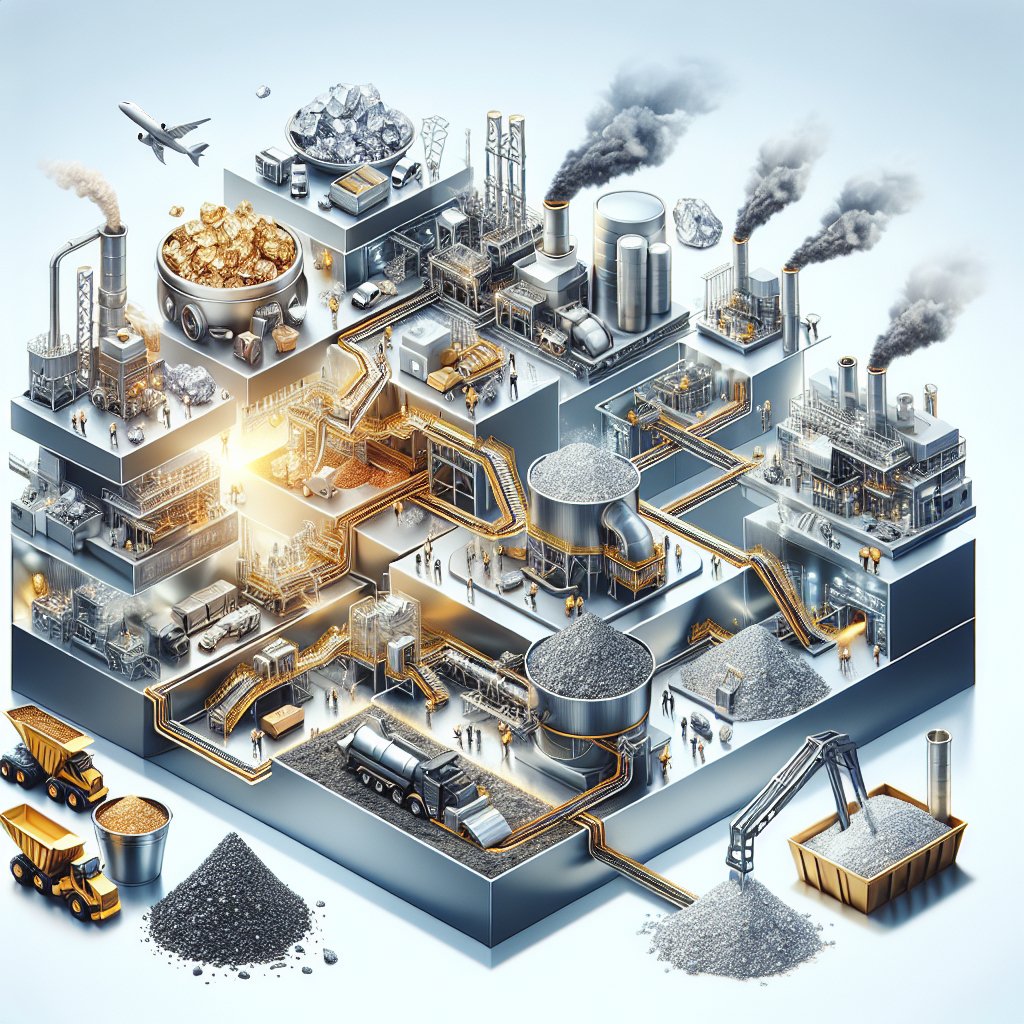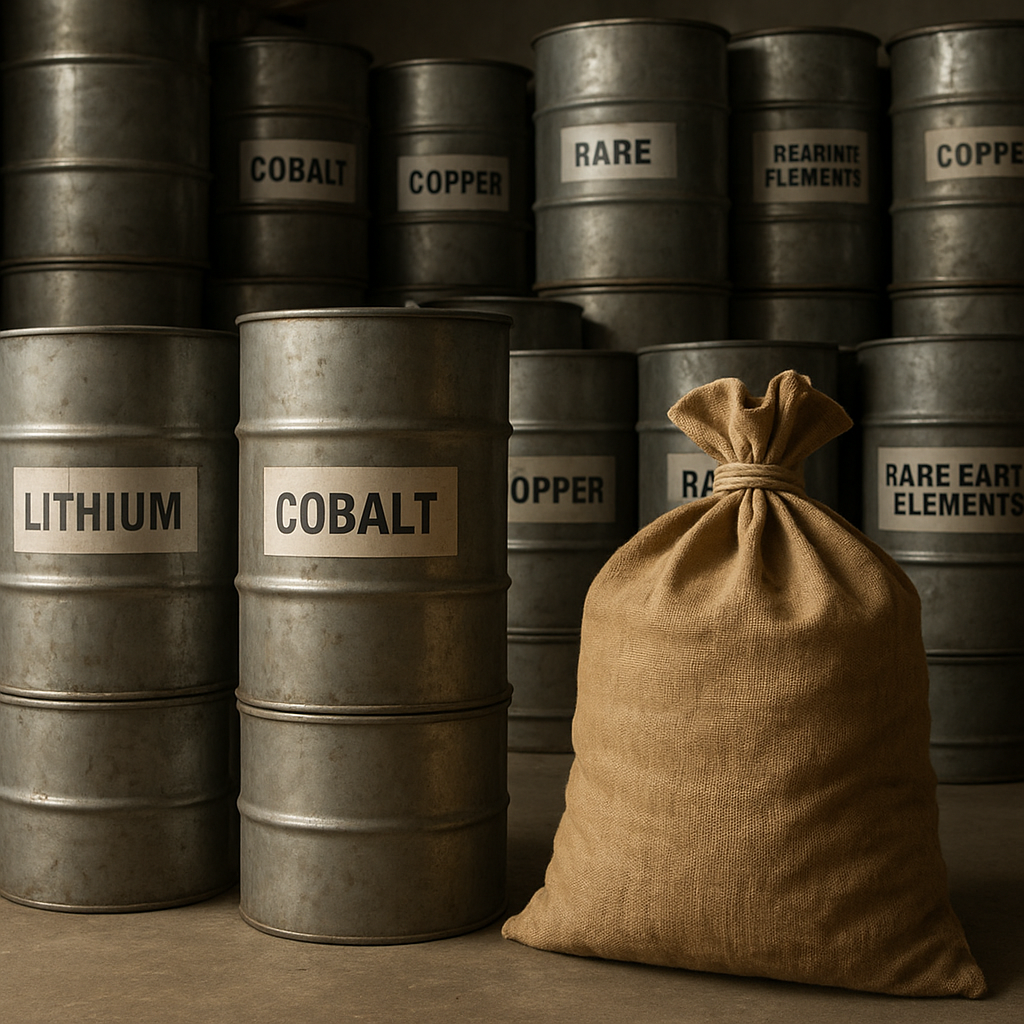The journey of rare metals from the depths of the earth to the bustling markets is a complex and fascinating process. These metals, which include elements like lithium, cobalt, and rare earth elements, are essential components in a wide range of modern technologies, from smartphones to electric vehicles. Understanding how these rare metals are processed is crucial for appreciating their value and the challenges involved in their production.
Extraction and Initial Processing
The first step in the journey of rare metals is their extraction from the earth. This process begins with mining, which can take several forms depending on the type of metal and its location. Open-pit mining is commonly used for metals found near the surface, while underground mining is employed for deeper deposits. In some cases, in-situ leaching, a process that involves dissolving the metal in place and pumping it to the surface, is used for certain types of deposits.
Once the ore is extracted, it undergoes initial processing to separate the valuable metals from the surrounding material. This typically involves crushing and grinding the ore to reduce it to a fine powder. The powdered ore is then subjected to various physical and chemical processes to concentrate the metal content. For example, flotation is a common technique used to separate metal sulfides from other minerals. In this process, the powdered ore is mixed with water and chemicals that cause the metal-bearing minerals to attach to air bubbles and float to the surface, where they can be skimmed off.
After concentration, the metal-rich material is further refined to remove impurities. This often involves smelting, a process that uses heat and chemical reactions to separate the metal from its ore. In the case of rare earth elements, additional steps such as solvent extraction and ion exchange may be required to achieve the desired purity levels. These processes are energy-intensive and can have significant environmental impacts, making the development of more sustainable extraction and processing methods a key area of research.
Refinement and Purification
Once the initial processing is complete, the next stage in the journey of rare metals is refinement and purification. This stage is crucial for producing metals that meet the stringent quality standards required for high-tech applications. The specific methods used for refinement and purification depend on the type of metal and its intended use.
For many rare metals, electrolysis is a common method of purification. In this process, an electric current is passed through a solution containing the metal ions, causing the pure metal to deposit onto an electrode. This method is particularly effective for metals like aluminum and copper, which are used in large quantities in various industries. However, for rare earth elements and other less common metals, more specialized techniques are often required.
One such technique is solvent extraction, which involves using a liquid solvent to selectively dissolve and separate the desired metal from impurities. This method is widely used for rare earth elements, which often occur together in nature and require careful separation to obtain individual elements. Another technique, ion exchange, involves passing a solution containing the metal ions through a resin that selectively binds the desired metal, allowing it to be separated from other elements.
The refinement and purification process is critical for ensuring that the final product meets the necessary specifications for its intended application. For example, the purity of lithium used in batteries is crucial for their performance and safety. As demand for rare metals continues to grow, the development of more efficient and environmentally friendly purification methods is an ongoing challenge for the industry.
Market Dynamics and Future Challenges
After the rare metals have been extracted, processed, and refined, they are ready to enter the market. The market dynamics for rare metals are influenced by a variety of factors, including supply and demand, geopolitical considerations, and technological advancements. The demand for rare metals is driven by their essential role in modern technologies, such as renewable energy systems, electric vehicles, and consumer electronics.
One of the key challenges facing the rare metals market is the concentration of production in a few countries. For example, China is the dominant producer of rare earth elements, accounting for a significant portion of global supply. This concentration of production can lead to supply chain vulnerabilities and geopolitical tensions, as countries seek to secure access to these critical resources. Efforts to diversify supply sources and develop domestic production capabilities are ongoing in many regions.
Another challenge is the environmental impact of rare metal production. The extraction and processing of these metals can result in significant environmental degradation, including habitat destruction, water pollution, and greenhouse gas emissions. As a result, there is increasing pressure on the industry to adopt more sustainable practices and reduce its environmental footprint. This includes the development of new technologies for recycling rare metals from end-of-life products, which can help reduce the need for new mining and processing.
Looking to the future, the rare metals industry faces both opportunities and challenges. The continued growth of technologies that rely on these metals is likely to drive demand, while advances in processing and recycling technologies offer the potential for more sustainable production. However, addressing the geopolitical and environmental challenges associated with rare metals will require coordinated efforts from governments, industry, and researchers. By understanding the complexities of how rare metals are processed and brought to market, stakeholders can work together to ensure a stable and sustainable supply of these critical resources.












